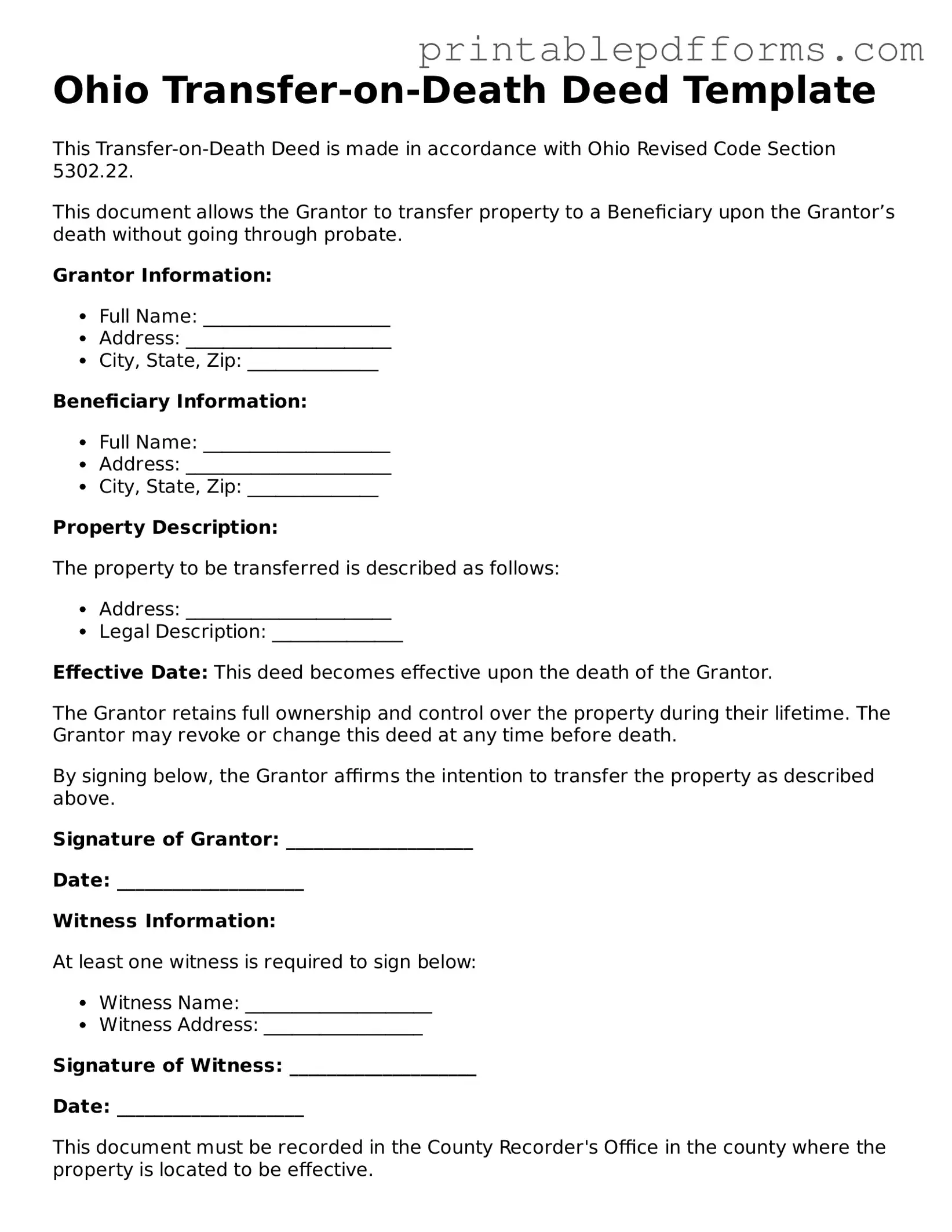Ohio Transfer-on-Death Deed Template
This Transfer-on-Death Deed is made in accordance with Ohio Revised Code Section 5302.22.
This document allows the Grantor to transfer property to a Beneficiary upon the Grantor’s death without going through probate.
Grantor Information:
- Full Name: ____________________
- Address: ______________________
- City, State, Zip: ______________
Beneficiary Information:
- Full Name: ____________________
- Address: ______________________
- City, State, Zip: ______________
Property Description:
The property to be transferred is described as follows:
- Address: ______________________
- Legal Description: ______________
Effective Date: This deed becomes effective upon the death of the Grantor.
The Grantor retains full ownership and control over the property during their lifetime. The Grantor may revoke or change this deed at any time before death.
By signing below, the Grantor affirms the intention to transfer the property as described above.
Signature of Grantor: ____________________
Date: ____________________
Witness Information:
At least one witness is required to sign below:
- Witness Name: ____________________
- Witness Address: _________________
Signature of Witness: ____________________
Date: ____________________
This document must be recorded in the County Recorder's Office in the county where the property is located to be effective.
